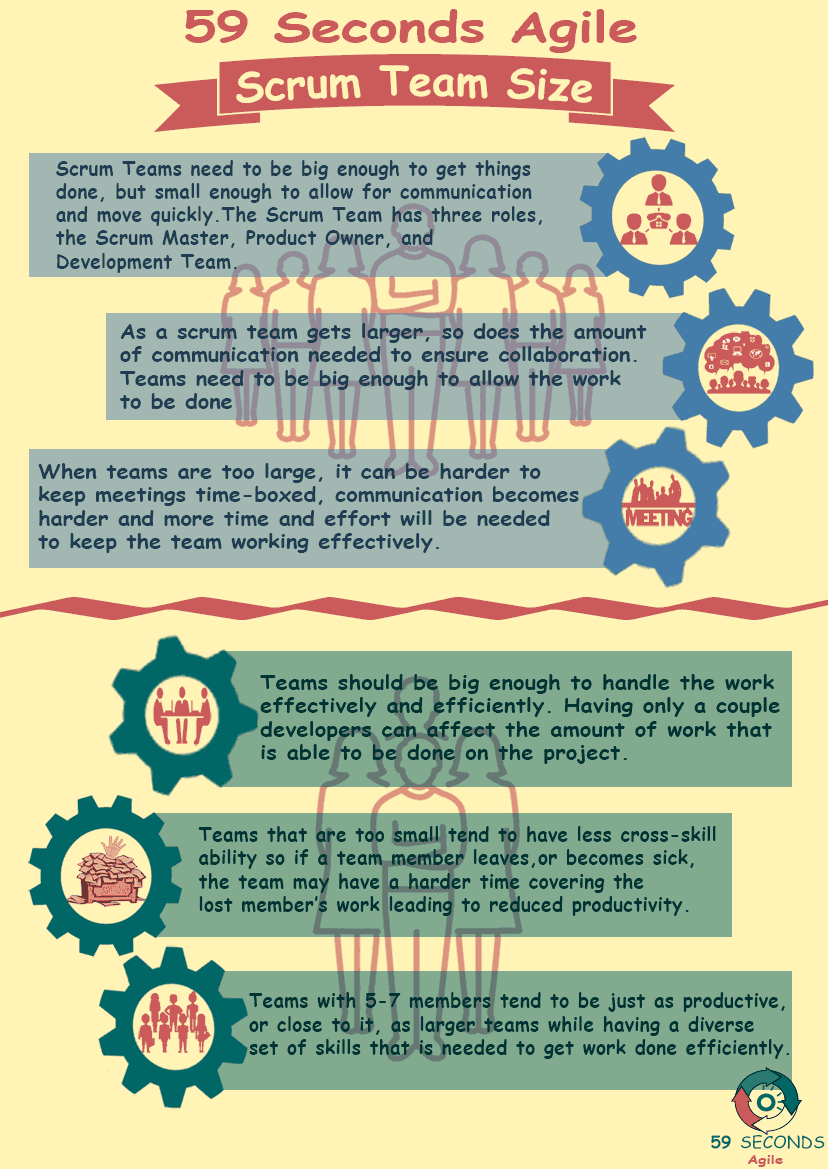
Scrum Team Size for Scrum Masters
Smaller Teams
Furthermore, small teams tend to have less breadth of skills in them which makes losing a team member can have more of an impact. Teams that are too small tend to have less cross-skill ability so if a team member leaves, or becomes sick, a too small team may have a harder time covering the lost member’s work. This can lead to lost productivity until someone else is found to replace them.
From a Scrum Master’s point of view, small teams pose their challenges too. Collaboration is key here, as well. If there aren’t enough people on the team to effectively collaborate, bounce ideas off each other, check each other’s work, and so on, it can be difficult to effectively do the work.

Teams that have around 5 people, excluding the Scrum Master and Product Owner, tend to be more productive and efficient. Collaboration and communication tend to be easier and there is a lot less overhead than larger teams. Forming a team with fewer members is also easier. Finding 5 people who can do the job is a lot easier than finding a team of 16.
Teams with 5-7 members tend to be just as productive, or close to it, as larger teams while having a diverse set of skills that is needed to get work done efficiently. Furthermore, members often have cross-functional skills that can come in handy just in case a team member is no longer available.
Five-member teams tend to be better at communicating and collaborating with each other. Scrum Masters will often spend less time coordinating between team members and planning events when teams are kept small. Planning meetings and keeping those meetings on track can take a lot more effort with larger teams. Not only are larger team meetings harder to keep time-boxed but one tangent could throw the whole meeting off course. Keeping a team small helps you as a Scrum Master keep the team on track and productive.
Our Favourite Agile Books
We found these books great for finding out more information on Agile Scrum:
Communication becomes exponentially harder and more complex as team members increase. More time and effort is spent on communications for larger teams. This is true for team members as well as the Scrum Master. Keeping communication effort down is important since this can start to eat away at productivity. If a team is too small, communication between the team may be easier, but collaboration may become harder. As a Scrum Master, you should consider the nature of the work and what is needed for the team when deciding a team size. This will allow you to keep the team and project going in a productive, efficient manner.

